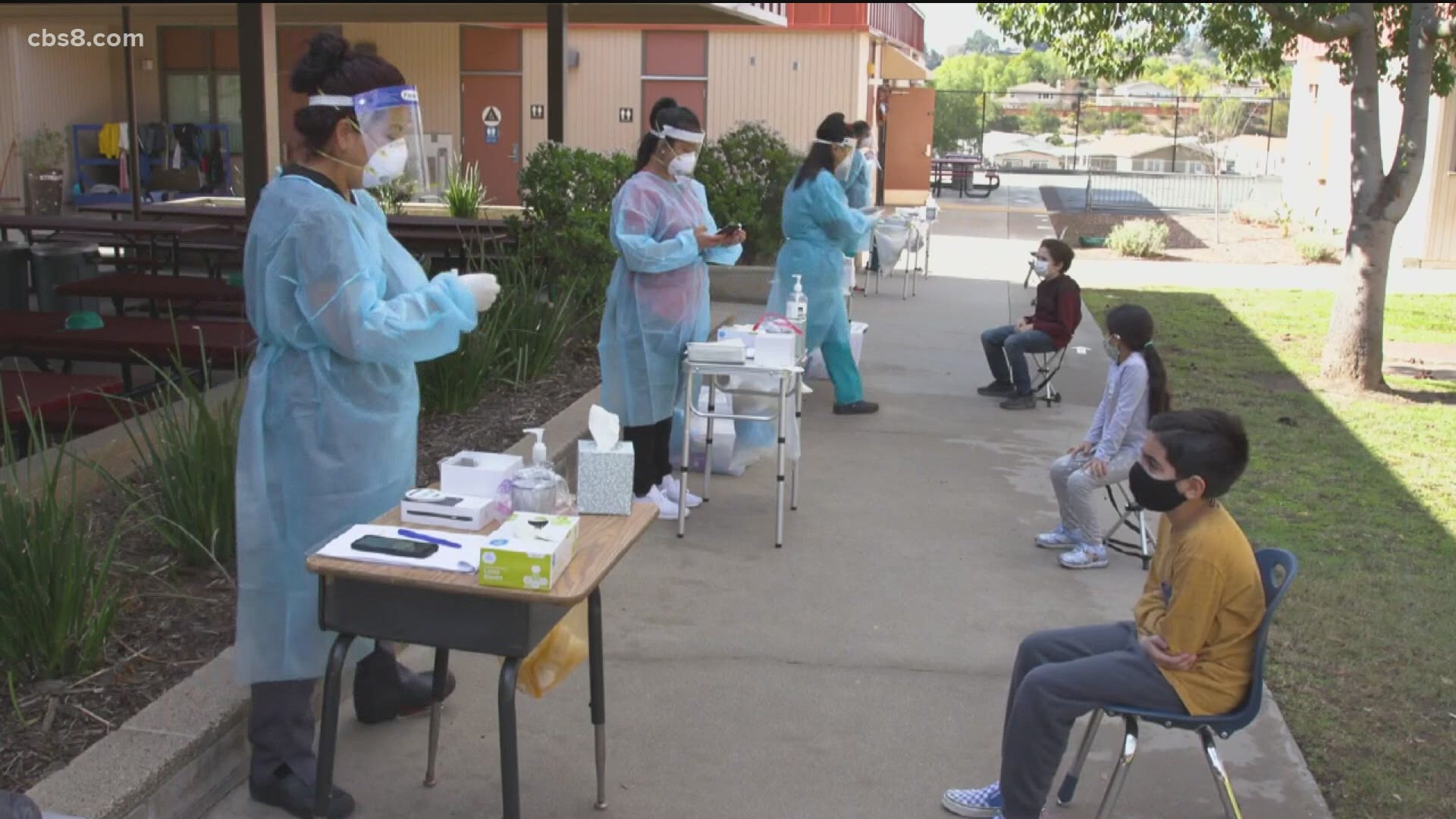SAN DIEGO COUNTY, Calif — In an effort to help schools reduce the risk of COVID-19 outbreaks as they resume in-person instruction, UC San Diego and San Diego County are testing a program to detect the virus which causes COVID-19 at schools and child care centers.
Modeled after UCSD's Return to Learn -- an approach to safely resume teaching, learning and research at a university -- Safer at School Early Alert system is scaled for individual schools and child care centers without the resources available at a research university.
Through daily wastewater and surface monitoring, the alert system tests for the presence of particles of SARS-CoV-2, the COVID-19-causing coronavirus. Combined with a responsive testing strategy, the aim is to quickly identify children or staff members who are infected with COVID-19 before an outbreak occurs.
Ten San Diego County-area TK-8 schools and two child care centers are participating in this SARS-CoV-2 early detection program, funded by the county and designed by UCSD.
When Vista Grande Elementary School began offering a hybrid-teaching model with 50% in-person classroom capacity, it instituted daily symptom screening, social distancing and requiring masks be worn by all students and staff.
The school's principal, Tita Cordero-Bautista, and David Miyashiro, Cajon Valley Union School District superintendent, enrolled the campus in Safer at School Early Alert.
"The health, safety and well-being of our staff and students is a top priority," said Cordero-Bautista. "Our educators are using every resource at their disposal to foster an engaging learning experience filled with rigor. Still, we understand that distance learning is not ideal for every student or family.
"Many in our community are at high-risk for COVID-19. By participating in the Safer at School Early Alert system, we hope to ease concerns about school safety so that parents and students are comfortable at school while building meaningful relationships and learning," she said.
One in three adults infected by the virus will not exhibit symptoms of COVID-19, but they can still spread the virus, which is detectable on surfaces and in human feces. Even those without symptoms will shed the virus in their feces and breathe it into the air, where it then settles on surfaces.
Daily screening, masking, physical distancing, weekly asymptomatic testing of students and daily wastewater monitoring are crucial elements of UCSD's larger strategy to incrementally repopulate its campus.
"Return to Learn has helped us successfully detect and manage the presence of virus on our campus" said UCSD Chancellor Pradeep K. Khosla. "We've learned a great deal creating this approach. We want to share that knowledge with others to promote better health outcomes in school systems and in communities everywhere."
Rebecca Fielding-Miller, assistant professor at the Herbert Wertheim School of Public Health and Human Longevity Science at UCSD, is leading a team in designing a testing model that can be implemented at schools.
Safer at School Early Alert is being piloted within communities at highest risk for COVID-19, including San Ysidro, Chula Vista, El Cajon, Southeast San Diego and Vista. These communities primarily serve low-income and immigrant families who have more challenges accessing COVID-19 testing and may have elevated levels of vaccine hesitancy.
"The Safer at School Early Alert system is in the validation phase right now to understand how accurate these monitoring systems are in child care centers and elementary schools," Fielding-Miller said. "Residents of the hardest-hit communities are often reluctant to test for COVID-19, so we are working with these communities to try to understand how we can make testing feel safe and accessible.
"Because a signal going off without a test is like a fire alarm going off without a fire extinguisher. It is not useful. It is just scary," she said.
The Safer at School Early Alert system includes three elements: collecting daily wastewater samples, daily surface monitoring and testing children and staff at each location.
The first time a child undergoes a nasal swab for the test, they may be nervous, said Fielding-Miller. To help ease their concerns, a team of certified nursing assistants talks the children through the process every step of the way, ensuring they are in total control of what is happening, she said.
Should a person test positive for COVID-19, the individual or parent is informed and advised to seek medical care. The school is also notified so that administrators can initiate exposure protocols.
The program is currently processing 1,000 tests weekly using anterior nasal swabs.
Should wastewater or surface monitoring provide a positive result, children and staff at the school or child care center receive a COVID-19 test as soon as possible so that the person who may be carrying the virus and their close contacts can be quarantined to stop an outbreak.

